July 8th Scots Book of Days
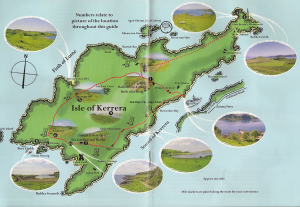 July 8 508 Sometime this year Castrum Arthuri Great man is backed up by George MacGregor’s The History of Glasgow. Of Strathclyde kings, he writes “The first mentioned ruler is Cawn or Caw, who is said to have been driven from his kingdom at the end of the 5th century by the Picts, and who took refuge in the kindred principality of Wales. At the commencement of the 6th century, Hoel, Coyle or Huail, became king; but his reign was no more fortunate than that of his predecessor. Tradition has it that the great King Arthur, whose exploits have been the subject of the works of many quasi-historians and minstrels, obliged Hoel to seek refuge in Anglesey, where he died in 508.
July 8 508 Sometime this year Castrum Arthuri Great man is backed up by George MacGregor’s The History of Glasgow. Of Strathclyde kings, he writes “The first mentioned ruler is Cawn or Caw, who is said to have been driven from his kingdom at the end of the 5th century by the Picts, and who took refuge in the kindred principality of Wales. At the commencement of the 6th century, Hoel, Coyle or Huail, became king; but his reign was no more fortunate than that of his predecessor. Tradition has it that the great King Arthur, whose exploits have been the subject of the works of many quasi-historians and minstrels, obliged Hoel to seek refuge in Anglesey, where he died in 508.
http://www.templum.freeserve.co.uk/history/strathclyde/arthur.htm
1249 King Alexander II, (1198-1249) King of Scots, died of fever on Isle of Kerrara, Oban Bay, (gaelic for little bay) South Hebrides. Son of William the Lion and Ermengarde of Beaumont. In 1221 Alexander married Joanna, sister to reigning Henry III King of England, and daughter of King John of England. historymedren.about.com
Oban occupies a beautiful setting in the Firth of Lorn, middle of the Isle, north west coast. The Church of Jesus Christ of Latter-day Saints and the Lorn Christian Fellowship (Independent) both of whom meet at Oban High School. Average of 310 precipitation days per year, or 6 days a week. Average low is at or below freezing from October through May. Wikipedia.
1333 Scots College (Latin: Collegium Scoticum; French: Collège des Écossais) was a college of the University of Paris, France, founded by an Act of the Parlement of Paris on 8 July 1333. The act was a ratification of an event that had already taken place, the founding of the Collegium Scoticum, one of a number of national colleges into which the University was divided. The Scots College came to an end in 1793 when the National Convention abolished the colleges. Before 1323 King Robert the Bruce of Scotland sent an embassy including the Earl of Moray and his kinsman David de Moravia (1299–1326), the Bishop of Moray, “to conclude a treaty of ‘confederacy’ ” renewing the auld alliance between Scotland and France. A passionate benefactor of religious learning, the Bishop in 1323 endowed the lands of Grisy-Suisnes, just outside Paris, on which the Scots College was built. The Collegium Scoticum came into existence in 1325 and its foundation was confirmed by Charles le Bel, King of France, in August 1326.
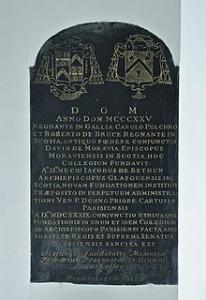 Plaque in the chapel, commemorating the history of the College. ‘D.O.M. Anno Dom MCCCXXV Regnante in aGallia Carolo Pulchro el Roberto de CRuce Regnante in Scotia, ANtiquo Foedere Conjunctis Davd De Moravia, Episcopus Moraviensis in Scotia Hoc Collegium Fundavit; A.D. MDCIII Jacobus de Bethun acriepiscopus Glasguensis in Scotia, Novam Fundationem instituit Praeposito in Perpetuum AdministraTioni Ven. P. Domno Priore. Cartusiae Parisiensis A.D. MDCXXXIX Conjvnctio Utriusque Fundationis in Unum et Idem Colegium ab Archiepiscopo Parisiensi Facta, Aug to retate Regis et supreme Senatus Parisiensi Facta, Aug to retate Regis et supreme senatus . Parisiensis Sancita Est.
Plaque in the chapel, commemorating the history of the College. ‘D.O.M. Anno Dom MCCCXXV Regnante in aGallia Carolo Pulchro el Roberto de CRuce Regnante in Scotia, ANtiquo Foedere Conjunctis Davd De Moravia, Episcopus Moraviensis in Scotia Hoc Collegium Fundavit; A.D. MDCIII Jacobus de Bethun acriepiscopus Glasguensis in Scotia, Novam Fundationem instituit Praeposito in Perpetuum AdministraTioni Ven. P. Domno Priore. Cartusiae Parisiensis A.D. MDCXXXIX Conjvnctio Utriusque Fundationis in Unum et Idem Colegium ab Archiepiscopo Parisiensi Facta, Aug to retate Regis et supreme Senatus Parisiensi Facta, Aug to retate Regis et supreme senatus . Parisiensis Sancita Est.
1528 Emmanuel Philibert, Duke of Savoy born. (died 30 August 1580). Godparent of Charles James” on 17 December 1566 in a Catholic ceremony held at Stirling Castle, represented by ambassador Philibert du Croc). Other godparents were Charles IX of France (represented by John, Count of Brienne), Elizabeth I of England (represented by the Earl of Bedford). (in Italian Emanuele Filiberto; known as “Testa di ferro”, in English “Ironhead”, because of his military career, Born in Chambéry, was the only child of Charles III, Duke of Savoy and Beatrice of Portugal to reach adulthood. His mother was sister-in-law to Charles V, Holy Roman Emperor, and the future duke served in Charles’s army during the war against Francis I of France, distinguishing himself by capturing Hesdin in July 1553.
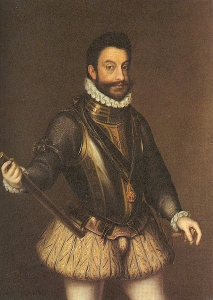 Duke of Savoy, was a suitor to Lady Elizabeth Tudor, the future Queen Elizabeth I. His lands were occupied, but he had a 4 century lineage to smooth the crown. He married his half-first cousin once removed Margaret of France, Duchess of Berry (1523–1574), daughter of King Francis I of France and sister to King Henry II. Their only child was Charles Emmanuel I of Savoy.
Duke of Savoy, was a suitor to Lady Elizabeth Tudor, the future Queen Elizabeth I. His lands were occupied, but he had a 4 century lineage to smooth the crown. He married his half-first cousin once removed Margaret of France, Duchess of Berry (1523–1574), daughter of King Francis I of France and sister to King Henry II. Their only child was Charles Emmanuel I of Savoy.
1647 Frances Stuart, Scottish aristocrat and mistress of Charles II, was born. The king nursed her back to health after catching smallpox. Stuart earned an enduring place in history when she was chosen by the King to sit as the model for Britannia, her profile appearing on British coins into the modern day. Or so the BBC relates.
 bbc.co.uk/scotland/history/onthisday/july/8
bbc.co.uk/scotland/history/onthisday/july/8
 treasurerealm.com/coinpapers/books/Montagu-Copper-Tin-and-Bronze-Coinage-of-England-1893/Charles_II.htmlAu
treasurerealm.com/coinpapers/books/Montagu-Copper-Tin-and-Bronze-Coinage-of-England-1893/Charles_II.htmlAu
A composite painting of Charles and Frances and Britannia.
1648 Scottish Engager army crossed the Border in support of the English Royalist forces in the Second English Civil War.
1673 Robert Millar (later described as the 1st), Minister of Ochiltree (high tree) was fined by the Privy Council, 8th July 1673, for not keeping the anniversary of the Restoration (29 May 1660 of Charles 2nd King of England, at whose deathbed on 6 February 1685, Charles was received into the Catholic Church.). Miller married (1) Margaret, daughter of Gilbert Kennedy of Girvanmains ; (2) Grizel, daughter of Colonel Hugh Cochrane, (brother of William Lord Cochrane, Earl of Dundonald), and had issue — Robert 2nd , minister of St Quivox; William, M.D. : John, minister of Neilston ; Hugh ; Margaret ; Katherine ; Mary ; Jean.”
SOURCE: Fasti ecclesiae scoticanae: the succession of ministers in the Church of Scotland from the reformation, Vol. III, page 61.
www.geni.com/people/Robert-Millar/
The earliest reference to the Church in Ochiltree is in 1296 when the curate of the Church, Robert de Spalding swore fealty (allegiance) to the English King, Edward I (Longshanks) at Berwick. While Robert the Bruce was on the throne, the Church lands at Ochiltree were granted to the Monks of Melrose. Ochiltree Castle, long since gone, was the seat of the Protestant branch of the Royal House of Stewarts. Andrew Stewart, grandson of Lord Avondale, exchanged his Barony with James Hamilton of the Stewarts, for the title of Lord Ochiltree in 1542, an Act of Parliament ordained this in 1543. The second Lord Ochiltree (Andrew Stewart) was wounded at the battle on Langdale fighting against Mary Queen of Scots. Andrew’s brother Henry Stewart married the widow (Margaret Tudor dowager Queen) of James VI and Henry was created Baron Methven (circa 1525). Margaret second daughter (of Andrew Stewart 2nd Lord Ochiltree) married the great reformer and orator John Knox in 1564 (he was several decades her elder, and they had children). John Knox almost certainly preached at the old Church at Ochiltree.
ochiltreechurch.homestead.com/History.html
Until 1669 the Ochiltree Parish contained the Parish of Stair, and in 1978 the two Parishes came together again as a linked charge.
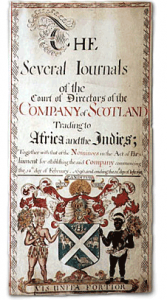 1699 The Darien colony. Sometime in July 1699.
1699 The Darien colony. Sometime in July 1699.
Famine aided the diseases which swept them off in large numbers ; and undoubtedly they, who thus perished for want of the provisions for which they were willing to pay, were as much murdered by King William’s government, as if they had been shot in the snows of Glencoe [Feb 13, 1692]. The various miseries [Sir Walter Scott’s Tales of a Grandfather-59-43] of the colony became altogether intolerable, and, after waiting for assistance eight months, by far the greater part of the adventurers (900) having died, the miserable remainder (300) abandoned the settlement.
(The Isthmus of Darien (later Panama) was unsettled because it was infected with Yellow Fever, which killed off the settlers. Prevention and cure had to wait two centuries until Pasteur’s discovery of the microbial theory of disease, in the 1850’s, and Col. Walter Reed’s discovery of yellow fever microbes transfer to humans by mosquitoes, in 1900. Defeat Mosquitoes, and defeat the ‘Yellow Jack’.)
‘Repent, repent ye, Hear the words of that God who made you, by the voice of famine.’ Jesus Christ in Doctrine and Covenants section 43.
www.rbs.com
1714 sometime in July. – The Whigs, alarmed at the near prospect of a crisis which the death of the Queen Anne could not fail [TG65-222] to bring on, made the most energetic and simultaneous preparations to support the Hanoverian succession to the crown, by arms, if necessary. They took special care to represent, at the court of Hanover, their dangers and sufferings on account of their attachment to the Protestant line; and such of them as lost places of honour or profit, were, it may be believed, neither moderate in their complaints, nor sparing in the odious portraits which they drew of their Tory opponents. The Duke of Argyle, and Generals Stanhope and Cadogan, were actively engaged in preparing such officers of the British army as they dared trust, to induce the soldiers, in case of need, to declare themselves against the party who had disgraced Marlborough their victorious general – had undervalued the achievements which they had performed under his command, and put a stop to the career of British conquest by so doing. The Elector of Hanover was induced to negotiate with Holland and other powers, to supply him with troops and shipping, in case it should be necessary to use force in supporting his title to the succession of Great Britain. A scheme was laid for taking possession of the [TG65-223] Tower on the first appearance of danger; and the great men of the party entered into an association, binding themselves to stand by each other in defence of the Protestant succession.
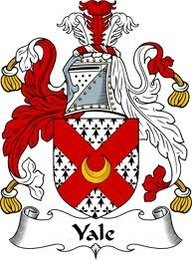 1721 Elihu Yale died. (b April 5, 1649), namesake for Yale College, and formerly the College of Connecticut, donor.
1721 Elihu Yale died. (b April 5, 1649), namesake for Yale College, and formerly the College of Connecticut, donor.
Coat of Arms with the Cross of Saint Andrews, Scottish national flag. (white for Scots since 1385, red for St. Patrick).
1745 Adventurer Prince Chevalier de St George Charles Stewart’s expedition sails on Doutelle sloop of war, with the Elizabeth 60 gun man of war. (TG75-70) The prince was with the Marquis of Tullibardine, Sir Thomas Sheridan, and other adventurers.
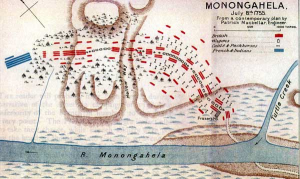 1755 Battle of Monongahela River 1755 – Braddock’s Defeat, Fort Duquesne, western Pennsylvania Colony. The French and Indian War also known as the Seven Year War (1757 to 1762).
1755 Battle of Monongahela River 1755 – Braddock’s Defeat, Fort Duquesne, western Pennsylvania Colony. The French and Indian War also known as the Seven Year War (1757 to 1762).
Monongahela and turtle creek.
1758 Battle of Ticonderoga. Lake Champlain North America. British Regiments. 42nd (the Highland Regiment: Black Watch) remembers the death of the regiment’s major, Duncan Campbell of Inverawe. The 42nd was a Campbell regiment. All 5 officer casualties at Fontenoy in 1745 had been Campbells. At some time in the 1740s Inverawe had been involved in concealing a fugitive. When it turned out the man had murdered his cousin, Inverawe turned him out in breach of a promise he had made. The fugitive appeared in a dream to Inverawe and said “I will see you at Ticonderoga”. By 1758 Inverawe had served in the Black Watch for some 20 years and was the major. Only on his arrival in America did he discover the existence of Ticonderoga. The fugitive appeared again to Inverawe in a dream the night before the battle the bloodstained figure predicted his death. Inverawe was severely wounded in the battle and died at Fort Edward after his arm had been amputated.
Grenadier of the 42nd Highlanders, the Black Watch. The worst affected were the 42nd with 490 casualties
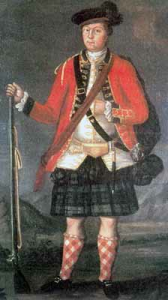 Captain John Campbell of the Black Watch was wounded in the battle, and is reputed to have been one of the 3 highlanders inspected by George II in 1742 when the regiment marched to London.
Captain John Campbell of the Black Watch was wounded in the battle, and is reputed to have been one of the 3 highlanders inspected by George II in 1742 when the regiment marched to London. 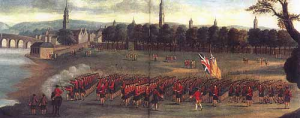 The King gave each man a sovereign which they are reputed to have thrown to the doorman on the way out. British and American colonial troops against French regular and colonial troops.
The King gave each man a sovereign which they are reputed to have thrown to the doorman on the way out. British and American colonial troops against French regular and colonial troops.
1775 Smith, Lucy Mack (1775-1856) born Gilsum, Cheshire New Hampshire descended from Mack of Inverness.
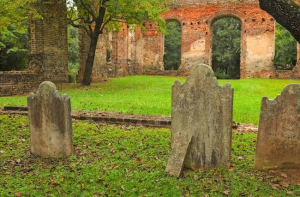 1781 sometime in July. (Popularly called Biggin Church) Berkeley County, South Carolina. ‘built in 1756 to replace the first St. John’s Parish Church, where it was once a garrisoned supply post of the British, who burned the interior in July 1781 as they were forced to evacuate. Rebuilt after the Revolution, the church was destroyed by a forest fire. The communion service, with its gilded silver chalice brought by Huguenots from La Rochelle, buried during the Confederate era at Comingtee Plantation, was never rediscovered. In the tangled growth around the crumbling walls, a marble vault covers the remains of Sir John Colleton III, great grandson of the Lord Proprietor.’ YYMA 87 see below.
1781 sometime in July. (Popularly called Biggin Church) Berkeley County, South Carolina. ‘built in 1756 to replace the first St. John’s Parish Church, where it was once a garrisoned supply post of the British, who burned the interior in July 1781 as they were forced to evacuate. Rebuilt after the Revolution, the church was destroyed by a forest fire. The communion service, with its gilded silver chalice brought by Huguenots from La Rochelle, buried during the Confederate era at Comingtee Plantation, was never rediscovered. In the tangled growth around the crumbling walls, a marble vault covers the remains of Sir John Colleton III, great grandson of the Lord Proprietor.’ YYMA 87 see below.
http://www.sciway.net/sc-photos/berkeley-county/biggin-church-ruins.html
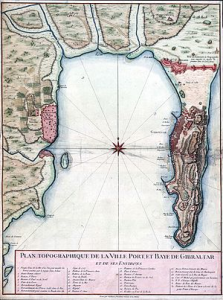 1801 The Battle of Algeciras. Bay of Gibraltar. Mediterranean. Lord Cochrane,
1801 The Battle of Algeciras. Bay of Gibraltar. Mediterranean. Lord Cochrane,
A map of Algeciras Bay, circa 1750, showing Algeciras (left) and Gibraltar; there is roughly 10 km (6.2 mi) of open water between them.
 1823 Sir Henry Raeburn, renowned artist died. Raeburn was known as the “Scottish Reynolds”, and became famous for his portraits of Scottish notables. Aside from his portrait of Rev Robert Walker skating, his other well-known works include Colonel Alasdair Mcdonnell of Glengarry and Portrait of Neil Gow.
1823 Sir Henry Raeburn, renowned artist died. Raeburn was known as the “Scottish Reynolds”, and became famous for his portraits of Scottish notables. Aside from his portrait of Rev Robert Walker skating, his other well-known works include Colonel Alasdair Mcdonnell of Glengarry and Portrait of Neil Gow.
bbc.co.uk/scotland/history/onthisday/july/8
1838 Joseph Smith the Prophet, Far West, Missouri (clans Huntley, Hamilton, Mackenzie, Mack of Inverness, Malcolm King of Scots) making known the disposition of the properties tithed. The law of tithing, as understood today, had not been given to the Church previous to this revelation. The term tithing in the prayer just quoted and in previous revelations (64:23; 85:3; 97:11) had meant not just one-tenth, but all free-will offerings, or contributions, to the Church funds. Doctrine and Covenants 119, 120. Let them repent of all their sins, and of all their covetous desires, before me, saith the Lord; for what is property unto me? saith the Lord. 117
1862 The Morrill Anti-Bigamy Act (37th United States Congress, Sess. 2., ch. 126, 12 Stat. 501)) was attached to the (Income Tax) Revenue Act of 1862, and signed by President Abraham Lincoln. Firmage, Edwin Brown; Mangrum, Richard Collin (2001), Zion in the courts, University of Illinois Press, p. 139, ISBN 0-252-06980-3, “Having signed the Morrill Act, Lincoln reportedly compared the Mormon Church to a log he had encountered as a farmer that was “too hard to split, too wet to burn and too heavy to move, so we plow around it. That’s what I intend to do with the Mormons. You go back and tell Brigham Young that if he will let me alone, I will let him alone.” The Morrill Tariff of 1861 was a high protective tariff law adopted on March 2, 1861. Morrill was its House sponsor. It was one of the last acts signed into law by President James Buchanan, a Democrat from the pro-tariff state of Pennsylvania. The Morrill Tariff, rewarded the industrial northern states, and replaced the Tariff of 1857, which was considered favorable to free trade, or the southern states whose cotton exports were punished. The vote was largely sectional. The sectional breakdown was 96–15 in the north, 7–9 in the Border, and 1–39 in the south. The anti-bigamy law was still in effect in 2014. The income tax (Revenue) portion expired at the end of the Civil War, repassed in 1893 and ruled unconstitutional circa 1895, and repassed after the 16th Amendment circa 1916, just in time for the Great War, and has been in effect ever since.
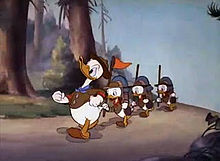 1938 Good Scouts is an American film produced by Walt Disney Productions and released by RKO Radio Pictures. The cartoon follows Donald Duck leading his nephews Huey, Dewey, and Louie on a scouting trip through the wilderness of Yellowstone National Park. (fictional clan McDuck)
1938 Good Scouts is an American film produced by Walt Disney Productions and released by RKO Radio Pictures. The cartoon follows Donald Duck leading his nephews Huey, Dewey, and Louie on a scouting trip through the wilderness of Yellowstone National Park. (fictional clan McDuck)
 Donald and his
Donald and his  nephews arrive at their
nephews arrive at their camp site.
camp site.
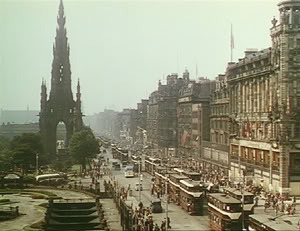 1951 Happy Go Lovely released in London. A British comedy musical set in Edinburgh, Scotland. The Producers meet Cinderella meet It happened one Night meet Braveheart plots are combined into a comedy. RKOs happy rainbow of rhythm and romance, Love, fun youth and set to music. Cesar Romero wears a kilt, similar to the roual Stewart. Will David Niven fall for Vera Ellen? Lots of rolling RRRRs
1951 Happy Go Lovely released in London. A British comedy musical set in Edinburgh, Scotland. The Producers meet Cinderella meet It happened one Night meet Braveheart plots are combined into a comedy. RKOs happy rainbow of rhythm and romance, Love, fun youth and set to music. Cesar Romero wears a kilt, similar to the roual Stewart. Will David Niven fall for Vera Ellen? Lots of rolling RRRRs 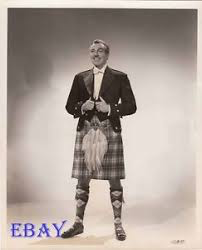 Stained glass windows, stone houses, Rolls Royces, at the Mercury Theartre. Great sets, a movie about the theatre, with Vera Ellen dancing. Happy go llovely
Stained glass windows, stone houses, Rolls Royces, at the Mercury Theartre. Great sets, a movie about the theatre, with Vera Ellen dancing. Happy go llovely
Edinbungh.
Cesar Romero in his kilt from Happy go Lovely
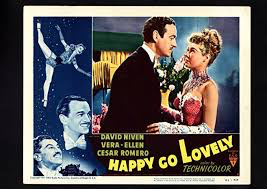 Filmed on location in Edinbugh.
Filmed on location in Edinbugh.
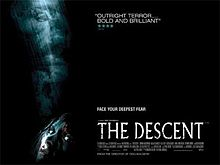 2005 The Descent low-budget import horror film from Scotland.
2005 The Descent low-budget import horror film from Scotland.
2008 Antonine Wall began AD 142, was listed as an extension to the World Heritage Site “Frontiers of the Roman Empire”
 Roman Emperor Antoninus Pius ordered the construction of the Antonine Wall around AD 142. Quintus Lollius Urbicus, governor of Roman Britain at the time, initially supervised the effort, which took about twelve years to complete. The wall stretches 39 miles (63 km) from Old Kilpatrick in West Dunbartonshire on the Firth of Clyde to Carriden near Bo’ness on the Firth of Forth. The wall did not keep the Caledonian (Scots) raiders out, if they wanted to cross.
Roman Emperor Antoninus Pius ordered the construction of the Antonine Wall around AD 142. Quintus Lollius Urbicus, governor of Roman Britain at the time, initially supervised the effort, which took about twelve years to complete. The wall stretches 39 miles (63 km) from Old Kilpatrick in West Dunbartonshire on the Firth of Clyde to Carriden near Bo’ness on the Firth of Forth. The wall did not keep the Caledonian (Scots) raiders out, if they wanted to cross.
Disclaimer: The author of each article published on this web site owns his or her own words. The opinions, beliefs and viewpoints expressed by the various authors and forum participants on this site do not necessarily reflect the opinions, beliefs and viewpoints of Utah Standard News or official policies of the USN and may actually reflect positions that USN actively opposes. No claim in public domain or fair use. © John Choate
Utah Standard News depends on the support of readers like you.
Good Journalism requires time, expertise, passion and money. We know you appreciate the coverage here. Please help us to continue as an alternative news website by becoming a subscriber or making a donation. To learn more about our subscription options or make a donation, click here.
To Advertise on UtahStandardNews.com, please contact us at: ed@utahstandardnews.com.


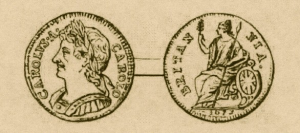
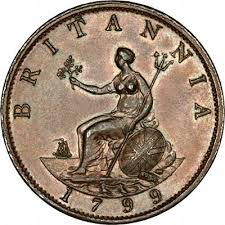
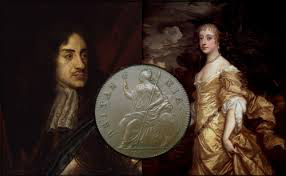
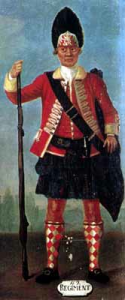
Comments - No Responses to “July 8th Scots Book of Days”
Sure is empty down here...